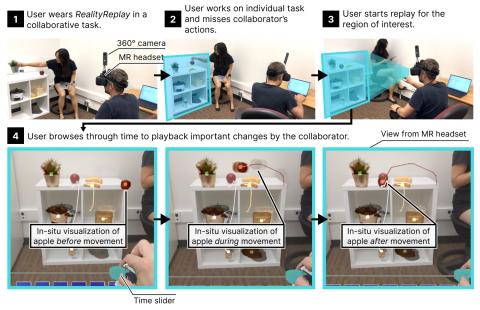Enabling Technologies

RealityReplay
PROJECTHumans easily miss events in their surroundings due to limited short-term memory and field of view. This happens, for example, while watching an instructo...
Audio Emotion Recognition
PROJECTWe have built an emotion recognition system based on prosodic features (i.e. intensity, pitch, formant frequencies of sounds) combined with short-term per...
Virtual Rehabilitation Assistants (VRAs)
PROJECTVRAs are applications of wearable devices which track patient home exercises in order to quantify exercise metrics regarding compliance, performance, and ...
Virtual Coach for Stroke Rehabilitation Therapy
PROJECTThis Virtual Coach evaluates and offers corrections and feedback for rehabilitation of stroke survivors. The Virtual Coach is composed of a tablet for cli...
Seating Coach
PROJECTThe goal of Seating Coach (SC) is to facilitate power wheelchair users to utilize auxiliary seating functions for health management while preventing poten...
Health Kiosk
PROJECTOur contention is that multi-user health kiosks, designed with input from older adults and situated in convenient community locations, offer a way to bols...
Connection Machines
PROJECTOur Connection Machines project investigates nonverbal and verbal behaviors of two partners in a conversation setting in the context of rapport. We have c...
Supporting Opportunistic Groups
PROJECTThis project is focused on tools, techniques and applications that support the opportunistic grouping of devices and/or users. This includes support for c...
Sensor Data Mining and Wearable UI/UX
PROJECTOur research in sensors and machine learning techniques seeks to improve HCI experience by developing objective and near real-time methods for recognizing...
Seniors and Quality of Life Technology
PROJECTWe address quality of life issues for seniors who have difficulty interacting with virtual information spaces. We lead projects to improve safe driving th...
Predicting User Mobility Patterns
PROJECTBy modeling the temporal and spatial movements of individuals, we can predict how long they will stay in their current location and where they will transi...
Phenom
PROJECTOur goals with Phenom are to (a) integrate various sources of data about us (e.g. call logs, contact lists, location data), and (b) offer an underlying pr...

